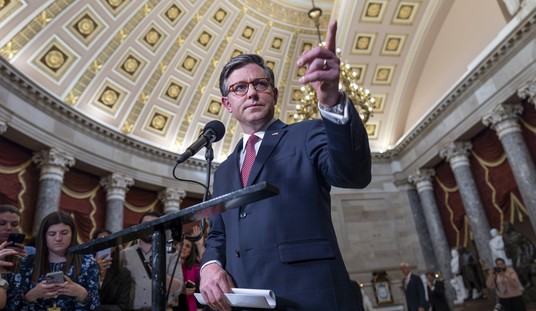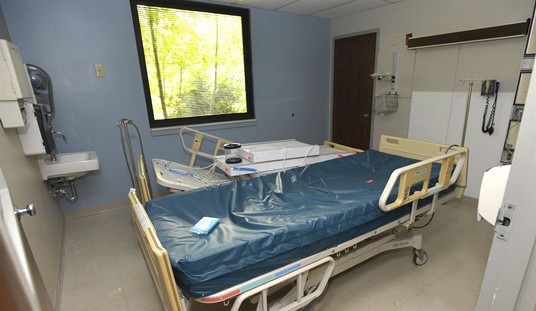Nothing sharpens the focus on the Unbridgeable Crevice separating th*g (the word “thug” is now banned) apologists on the far left from those of us who use words because they mean something than Baltimore’s self-immolation.
It’s really a tale of two cities, depending on who’s telling the tale.
The borderline-Jacobins at Slate, who believe spanking is child abuse, and personal responsibility is out of fashion, try to explain looting away as a social phenomenon: “Why would anyone burn down the only CVS in their neighborhood?”
The reason, I think, is likely the same reason that poor black Americans in cities across the country burned “their own” neighborhoods in the late 1960s: They did not experience those places as their own. Then, like now, police brutality was a precipitating cause of the violence, but it was the long-term experience of the indignities of the ghetto that gave shape to the riots. Then, like now, commentators compared the rioters to animals who had run wild and needed discipline. Rioting, to these bystanders, was not proper political protest but the criminal actions of poor people who merely wanted to grab what they could for free. This narrative, which I heard throughout my childhood growing up in Baltimore in the 1980s, put the blame not on the depredations of the ghetto, but on the character of its residents. It completely misapprehends the political economy of our poorest neighborhoods.
In other words: they riot because society has ignored them. Not only is that a specious argument, but it also highlights the fact that Baltimore hasn’t had a Republican mayor since 1968. So which party is responsible for ignoring the downtrodden social class?
Told another way, Abraham Miller at National Review wrote:
Because riots in our time tend to occur in poor black neighborhoods, we associate characteristics of black poverty with riots. Yet, before the 1960s, most rioters were white, and when blacks were involved, they tended to be victims rather than participants.
Many 19th-century riots were the actions of white middle-class or stable white working-class populations. Yet, social scientists have not proposed that the demographic characteristics of being white or economically stable led people to riot. Every riot has a precipitating event, something that results in anger turning to aggression. The mysterious death of Freddie Gray, a young black man, who succumbed while in police custody, was such an event. The reaction to it had the potential to turn into a riot. But it did not in and of itself turn into a riot. Riots, like all forms of political and social violence, require mobilization, and mobilization requires leadership. Spontaneity is one of the great myths about social events.
Both the left and right agree on the precipitating event, but the left holds onto the inevitability of riots, like natural disasters—a 100 year flood, a 20 year earthquake, a 10 year hurricane, and a 5 year riot. It just happens. So let it happen.
The left blames unemployment, lack of transportation, and payday loan businesses for wonton destruction. Sure, having a ready supply of unemployed teens looking for trouble does tend to multiply the chances of hooliganism, but it doesn’t make the resulting riot inevitable.
On the 1600 block of North Avenue, where a police van held Freddie Gray on the night he was arrested, the storefront of payday lender Ace Cash Express advertises “PAY BILLS. CHECKS CASHED.” Last year, the Consumer Financial Protection Bureau denounced Ace Express’ payday lending, which “used false threats, intimidation, and harassing calls to bully payday borrowers into a cycle of debt … drain[ing] millions of dollars from cash-strapped consumers who had few options to fight back.” The looters who broke into Ace this week might well have been there before, as customers. They might also have been customers at Cash USA, a pawn shop at 2105 West Pratt Street that went up in flames this week, and which, like Ace, advertises its check cashing services. When Baltimoreans looted and burned payday lenders, check-cashing operations, and pawn shops this week, it was not just a chance to get money, it was chance to get back some of their money.
Louis Hyman, the writer, italicized their money, suggesting that payday loan companies have somehow stolen money from their patrons. First of all, 6 percent of all payday loans default—for every $10,000 the companies loan, two weeks at a time, of the company’s money, they lose $600. Plus, they have to pay their staff to complete all the paperwork for each loan, which costs, say $10 per loan. So for 50 loans of $200, it’s already cost the company $1,100, and they haven’t even received a penny. To just break even, they have to charge at least $32 per loan—yes that’s 16% and they haven’t even made a profit yet.
But the looters are just avengers of social justice to the left, because “the poor” never use their EBT cards for drugs, or cigarettes, or booze, or strip clubs. So Baltimore’s leftist leaders just let them riot, loot and destroy other people’s property. Like that will stop the riots.
But we know what stops riots, Miller points out.
When it comes to riots in America, pundits bring out the Kerner Commission Report, citing its highly questionable material on root causes while always seeming to ignore those parts of the report that noted that the use of quick, decisive force ends riots.
This, obviously, brings us to the tactic enunciated by Baltimore mayor Stephanie Rawlings-Blake: “It’s a very delicate balancing act, because while we try to make sure that [the rioters] were protected from the cars and other things that were going on, we also gave those who wished to destroy space to do that as well.” This, of course, was the same tactic used in Ferguson by Missouri governor Jay Nixon, which permitted rioters to destroy small businesses in downtown Ferguson without opposition.
This brings us full circle, because the ineffective, corrupt and Democrat-run Baltimore Police Department is as unable to apply tactical and effective force to end a riot as the city’s mayor is able to order it. Both are complicit in the destruction, and six officers, who likely are asking “what did I do wrong?” because they did their jobs the same way every day, are being sacrificed on the altar of inevitability.
Ending the cycle of poverty certainly will make rioting less likely, as Slate concludes: “ In the months ahead, we must remember that it will be not enough to stop police brutality—we need to provide better economic opportunities as well if we want to improve the lives of Baltimore’s poor.”
But bowing to the inevitability of riots, along with looting, murder, and destruction, does nothing but encourage th*gs to be thuggish. Miller concludes:
We now give those who wish to destroy space to do so, and we thus throw gasoline on the already incendiary nature of riots. It is not politically acceptable to use decisive force against young, black, male thugs. It is acceptable to let them burn poor families out of their homes, attack fire trucks, and throw bricks at police. Welcome to politically correct America, a society that will incinerate itself on the altar of political correctness.
President Obama said “you didn’t build that,” to American entrepreneurs and industrialists. Baltimore’s incineration cries out to Obama and the leftist party of slavery, eugenics, and abortion: you built that.














Join the conversation as a VIP Member